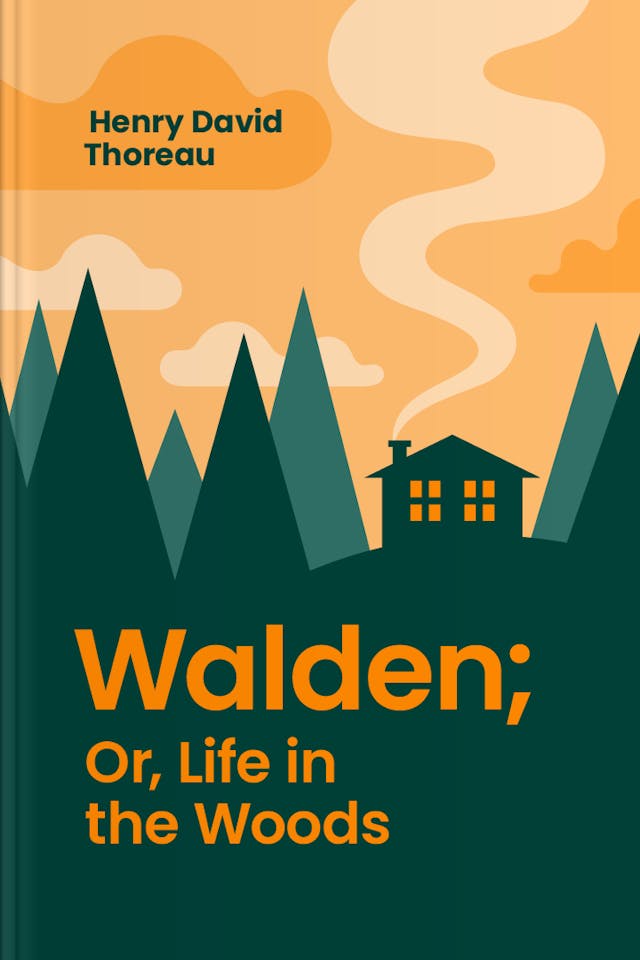You’ll learn
- Why less is more in life
- To find depth in solitude
- How nature heals
- Spring's rejuvenating power
russia has launched a full-scale war in Ukraine. Donate to support Ukraine and protect the world’s peace.

first KEY POINT
Reflecting on the notion of economy, Henry Thoreau addressed the question of needs. You have probably heard about Maslow's hierarchy of needs that explains the needs all people must satisfy and the consequences of doing so. On the first level of the pyramid, American psychologist Abraham Maslow put physiological needs, including nourishment and shelter. Surrounded by nature for so long, Thoreau had a chance to analyze the basic laws of our psychology before Maslow.As a result of his observations, the author noticed that while animals required only shelter and food, human beings needed fuel and clothing on top of that to feel secure. He made a reasonable conclusion that only after a person had satisfied the needs mentioned above would they effectively take care of other issues in life.In Thoreau's philosophy, fuel meant fire, which people used to cook food and heat their shelters. Fire and the clothes they created kept them warm. For animals, food is the only fuel, and it keeps them warm, keeps them alive. In the same way animals strive to sustain their inner “fire” by eating, people do the same by wearing clothes and heating their food and houses. As such, putting all the puzzle pieces together, we realize that our primary need lies in keeping ourselves warm from the inside and outside.Having this need met, people get the opportunity to develop their inner world. That's what philosophers do. They observe the external, analyze it, try to become better, and convey their knowledge through the text. Thoreau wondered why people stagnate once they obtain a certain amount of wealth. He compared the material world to the soil and a human being to the seed. Soil provides all necessary elements for the seed to grow, but why doesn't the seed rise over the ground?
Walden; or, Life in the Woods will help you find inner peace and reconsider your relationship with nature. The author showed that humans would feel perfectly happy among animals, plants, and trees. You will understand how important it is to visit the forest, sea, pond, or meadow to establish inner harmony. If you are afraid of solitude, Thoreau’s example demonstrates that people are deeper and more interesting than they think. Solitude is rather a gift than an issue.
second KEY POINT
The problem of owning a house is that it ties a person to one place. Thoreau thought that when one purchased a property, they didn't become wealthier but poorer. He analyzed how the farmers, their children, and their grandchildren couldn't sell a house and move somewhere else.

Continue reading with Headway app
Continue readingfirst KEY POINT
second KEY POINT
third KEY POINT
fourth KEY POINT
fifth KEY POINT